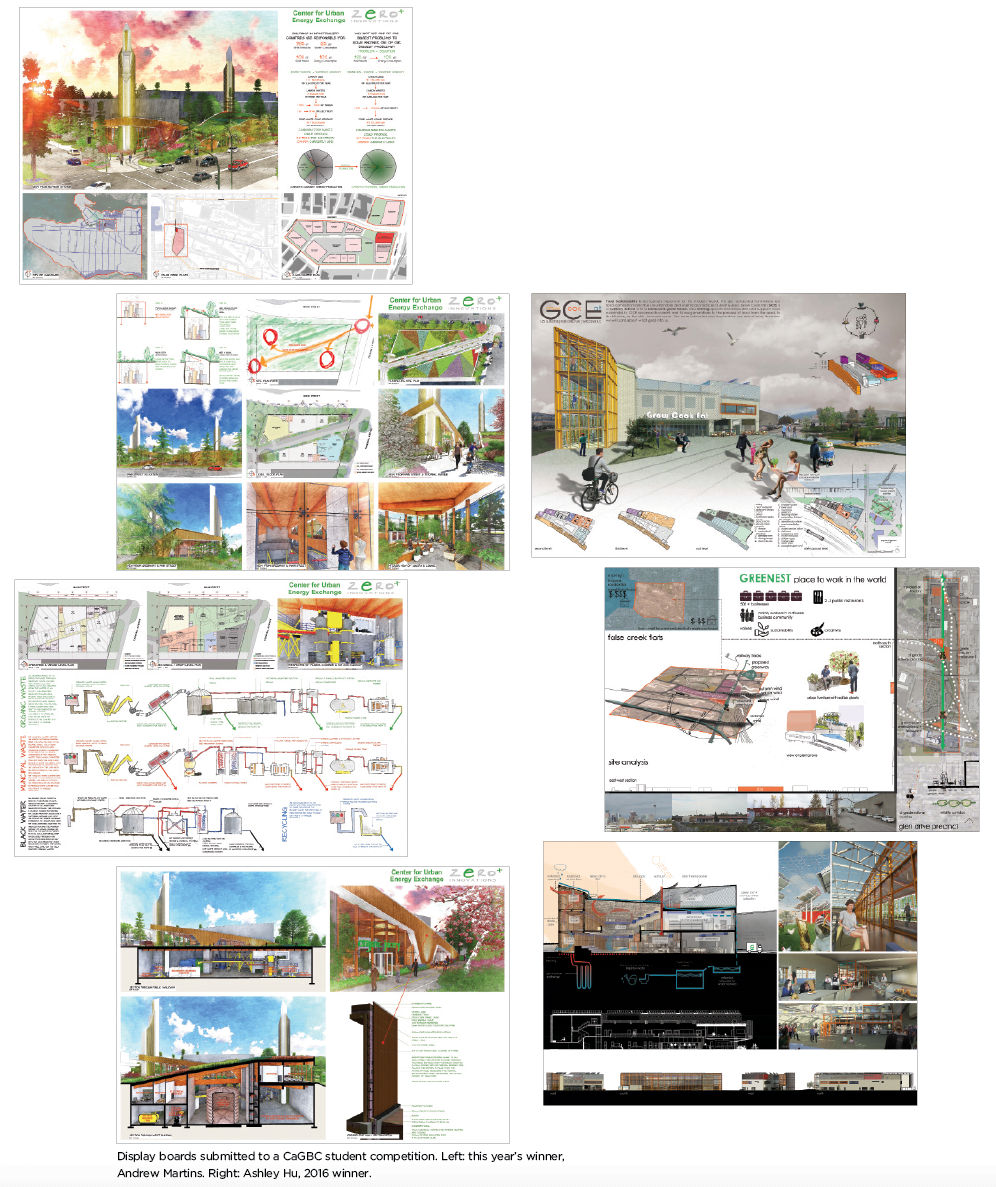
For the sixth consecutive year, a graduate from the British Columbia Institute of Technology’s Architectural Science program has won the national CaGBC Student Project Award. This year’s winner, Andrew Martins, joins Ashley Hu [2016], Jason Reid [2015], Alison Walker [2014], Albert Lam [2013] and Simon Vangrootheest [2012]. The objective of the Award is “to recognize a student project that demonstrates leadership, innovation, inspiration and a creative vision for the future of sustainable design in the field of green building and communities” – a national challenge where this small degree program consistently succeeds.
By Jody Patterson and Matthew Woodruff
In 2016, to recognize the sixth consecutive win from one program, CaGBC also granted the 2016 Academic Leadership Award to program head Ron Kato. This string of success has led us to reflect upon the way in which sustainability is taught in our program, to see if there might be useful clues for other schools or the profession as a whole. Our conclusion is that the tight constraints of our program, the choice to prioritize sustainability as a fundamental design driver, and the explicit adoption of a laddered thinking model are distinct characteristics of our approach, which, when combined with a thoughtful and passionate student body have all contributed to this success.
The Bachelor of Architectural Science at BCIT is a compact two-year program, on a 2+2 model: students completing BCIT’s two-year Architectural and Building Technology [ABT] diploma or equivalent may be admitted to the degree program. With a small, aligned faculty of six instructors [the majority of whom teach part-time and continue to practice], the program is characterized by a small cohort up to 24 students with a strong foundation of hard technical skills, and an intensive program of in-class instruction which emphasizes sustainability in every course. This approach gives us the opportunity to support students in exploring sustainability through the gamut of analysis, precedent, and technical performance in all core courses. Most importantly, in design studio courses we seek to develop students’ ability to consider complex questions and whole systems in their design solutions, asking questions such as “how big is here?”, “how does this place work?”, and “how might the nature of here evolve?”
What sets this program apart is both the BCIT polytechnic approach – providing technology-based solutions in response to industry needs – and the Architectural Science program methodology: to teach a ladder of critical thought, following a deliberate and evolving framework. This scientific process works through progression, analysis and repetition to ingrain sustainable thinking, reinforced in every core course delivered.
Jody Patterson, B. Arch, M. Arch, MRAIC is a Faculty Member BCIT School of Construction. Matthew Woodruff, Architect AIBC, is a Principal at Local Practice Architecture + Design, Faculty Member BCIT School of Construction.



